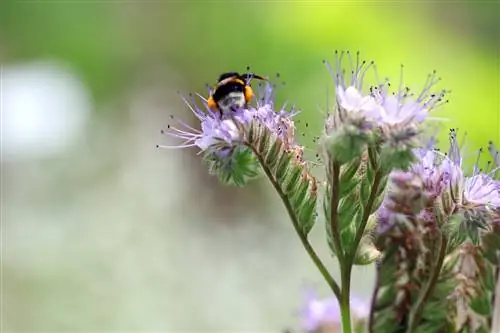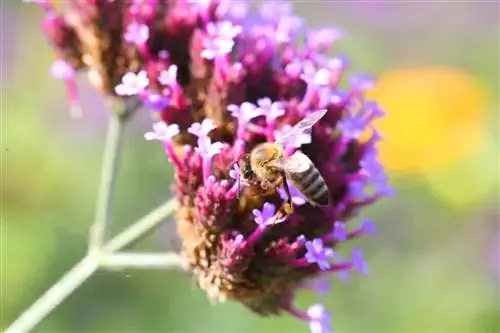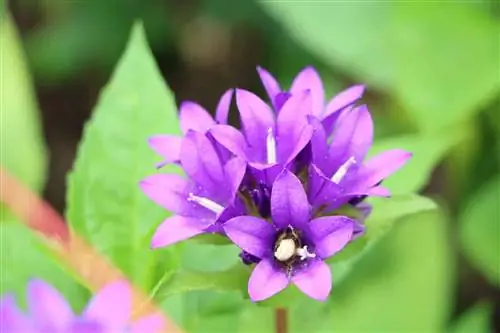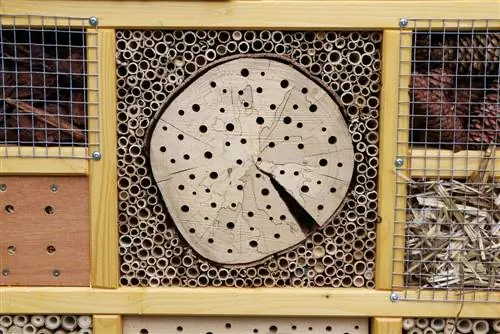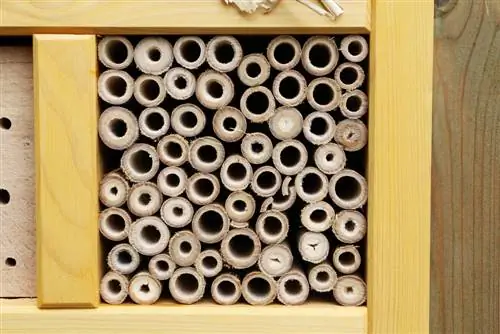- Author admin [email protected].
- Public 2023-12-17 03:39.
- Last modified 2025-01-24 12:45.
Phacelia tanacetifolia has been in cultivation since 1832, which primarily benefited beekeeping. Due to its high nectar production, the species is also known as the honey plant.
Profile
- Genus Phacelia contains about 150 species
- belongs to the roughleaf family
- Phacelia tanacetifolia is suitable for cultivation in Central Europe
- develops wheel-shaped and blue to purple colored flowers in zymous inflorescences
- Flowering time is between June and October
- is used as an ornamental and useful plant for bee pastures, as a fodder plant or for green manure
Observe location tolerance
Phazelia originally comes from the New World. Their distribution area extends to Mexico, California and Arizona. Stony rocky slopes represent the natural habitat, with the tufted flower also found growing wild on roadsides and paths or in rubble sites and fields. It can be found at altitudes of up to 2,000 meters. Your requirements for location and soil are therefore designed to be simple:
- prefers sunny to semi-shady locations
- grows on all soils that are permeable
- thrives in humus-rich or lean, stony and sandy substrates
- tolerates dry conditions
Carry out sowing correctly
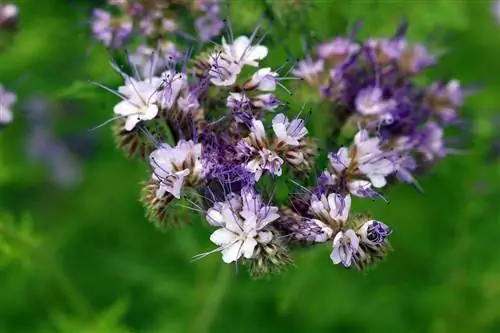
The phacelia is a dark germinator. Since its seeds are sensitive to frost, sowing is only recommended at mild temperatures. Therefore, you should keep the climate in your region in mind when sowing. The seeds are sown in the bed as follows:
- Direct sowing takes place from April to September
- ideally wait until the Ice Saints are over
- Sowing in planters possible from March
- Sow seeds in rows 15 centimeters apart and cover thinly with soil
- Wide spreading is also possible on large areas
- Thenly roll or press the substrate lightly
- sown a new batch of seeds every two to three weeks to extend the flowering period
Tip:
If you then keep the bed evenly moist and the temperatures are between twelve and 18 degrees, the seeds will germinate within ten to 14 days.
Select plant neighbors
Phacelia tanacetifolia reaches heights of 20 to 120 centimeters. With its short-haired stems bearing sprawling leaves, the plant blends in with wild perennials and flowers. It is suitable for natural gardens and increases the diversity of insects. Species that are equally valuable for the garden fauna and have similar requirements for the location are suitable as planting partners:
- valuable bee plants: buckwheat, marigold, borage and black cumin
- herbs suitable for cooking: wild carrot, fennel, wild button, parsnip and hornbeam clover
- clover-like legumes: Swedish clover, Alexandrine clover, crimson clover, Persian clover and yellow clover
Only water occasionally
The plant is adapted to habitats where the subsoil holds little or no water. Their tolerance to drought is correspondingly high. Normally the natural rain periods are sufficient to provide the Facellia with sufficient supply. In these situations, additional watering makes sense:
- In the initial phase, regular watering makes sense so that the substrate remains evenly moist
- Outdoor plants enjoy watering in the morning or evening during hot periods
- Water potted plants when the soil is completely dry
Do not fertilize excessively
The bee friend develops a dense and richly branched root system. This allows the plant to make optimal use of the nutrients in the soil, even if it is characterized by poor properties. Because of this good survivability, it is not necessary to additionally fertilize the bed. If the insect magnets thrive on normal garden soil, fertilization is unnecessary. If poor soils or sandy substrates are available whose nutrients are quickly depleted, a nutrient supply makes sense. It helps to maintain flowering and causes increased leaf mass development. How to do it right:
- Fertilize outdoor plants that show deficiency symptoms and potted plants
- carry out once a month after the first pair of leaves have developed
- Use liquid fertilizer in low concentration
Avoid cutting
Facilia is a green manure plant whose above-ground parts die off in autumn. As soon as the thermometer falls into the minus range, the tufted flower has no chance of survival. Cutting measures are not necessary, nor is cleaning up in the bed. As leaves and stems rot, they release their stored nutrients into the soil. Since the bee friend increases the humus content of the soil, its productivity increases. The roots improve the soil structure, so that yield security increases in the long term, even on light substrates.
Tip:
Leave the plants standing after wilting and dig up the soil next spring. The stored nutrients provide a natural source of nutrients and provide improved growth conditions for subsequent seeds.
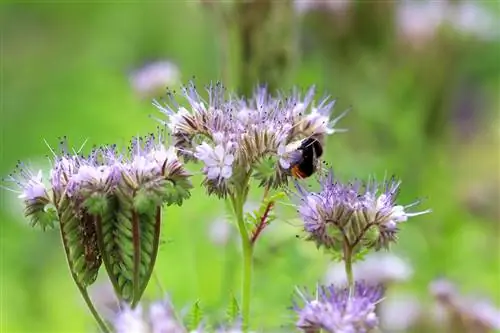
Collecting seeds
The tufted beauty is a magnet for bumblebees, honey and wild bees as well as butterflies and hoverflies. They are after nectar and pollen and ensure fertilization during the flowering period in summer. Once this has occurred, the plant produces two-columned capsule fruits. The seeds it contains are reminiscent of small oranges due to their warty surface. They are very light and spread with the wind. In order to propagate the annual tufted beauty manually via its seeds, speed is required:
- Cut off the fruit heads shortly before they are fully ripe.
- the ideal time is when the fruits have not yet dried completely and are completely closed
- Bundle plant parts and hang upside down in a well-ventilated room to dry
- empty the easily cracked capsule fruits into a clean cucumber jar
- keep in a dark and dry place until next spring
Tip:
You can store the seeds for about four to five years without losing their ability to germinate.
Protection against diseases
The phacelia proves to be resistant to diseases and insect pests. It is not closely related to typical crops in the home garden. For this reason, you do not have to worry about pathogens or pests that can be transmitted from the honey plant to other species. It protects reseeding from root thinning or clubroot.

